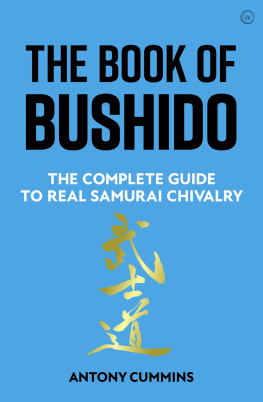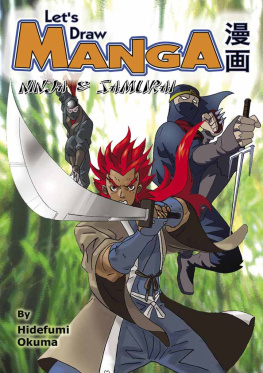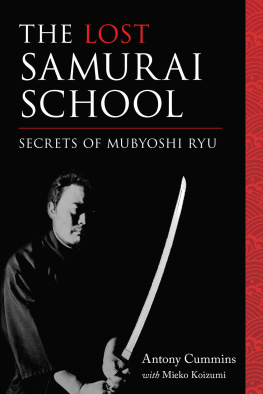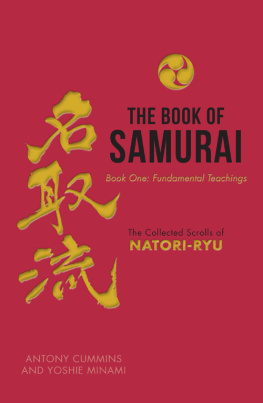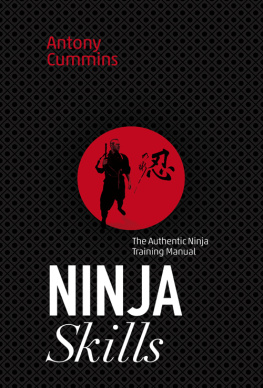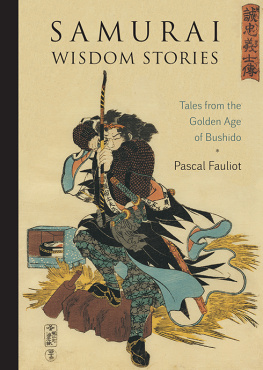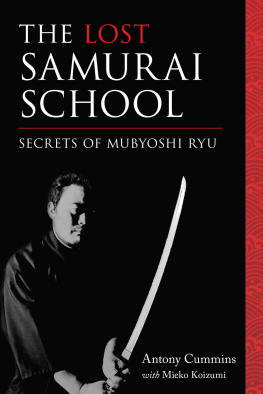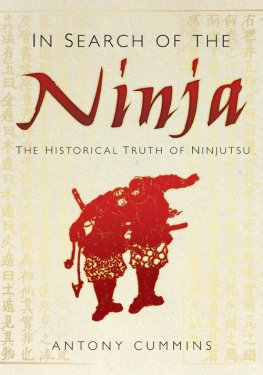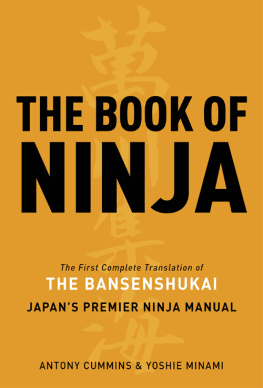About the Author
Antony Cummins is from Lancashire, England, and is the author of multiple books on Japanese history and the ways of the shinobi. Antony has a Bachelors degree in Ancient History and Archaeology and also a Masters degree in Theoretical Archaeology. He leads the Historical Ninjutsu Research Team and is dedicated to the reinterpretation of historical samurai ways and the promotion of medieval Japanese culture. For more information, visit his website and other social media sites: www.natori.co.uk.
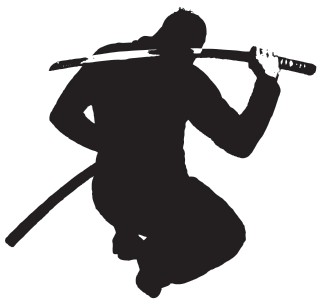
Acknowledgments
I would like to thank the following people for them continuing support. Firstly, to Yoshie Minami and Mieko Koizumi for their constant help and translation, without them the world of the samurai and shinobi would still be dark. Next is Daniel Tennent, I would like to thank him for his ever encouraging words and his insight into warfare. Also, to Paul Martin, who has a great understanding of the Japanese sword, a researcher, who has dedicated his life to samurai history. Appreciation must go to Richard Gillies who has helped fund the acquisition of rare books and scrolls and also to Rob Simmons, Kevin Aspinall and Robert Lee, who have created the wonderful images found within these pages. To Gian Piero Costabile for his image of the Fukushima-Ryu boat and to Rien de Rooij who generously supplied me with the Fukushima-Ryu documents from his own collection. Ben Morgan for his continued and very English style of support. Lastly to Jacob Sipes, for editing early drafts.

Contents
Part I
TEARING THE WORLD OF THE SAMURAI AND NINJA APART
Part II
THE SAMURAI
Part III
THE SHINOBI
Part IV
THE RESURRECTION
Published by Tuttle Publishing, an imprint of Periplus Editions (HK) Ltd.
www.tuttlepublishing.com
Copyright 2015 Antony Cummins
All rights reserved. No part of this publication may be reproduced or utilized in any form or by any means, electronic or mechanical, including photocopying, recording, or by any information storage and retrieval system, without prior written permission from the publisher.
Library of Congress cataloging in process
ISBN: 978-4-8053-1334-3
ISBN: 978-1-4629-1506-4 (ebook)
Distributed by
North America, Latin America & Europe
Tuttle Publishing
364 Innovation Drive
North Clarendon, VT 05759-9436 U.S.A.
Tel: (802) 773-8930; Fax: (802) 773-6993
www.tuttlepublishing.com
Japan
Tuttle Publishing
Yaekari Building, 3rd Floor
5-4-12 Osaki, Shinagawa-ku, Tokyo 141 0032
Tel: (81) 3 5437-0171; Fax: (81) 3 5437-0755
www.tuttle.co.jp
Asia Pacific
Berkeley Books Pte. Ltd.
61 Tai Seng Avenue #02-12, Singapore 534167
Tel: (65) 6280-1330; Fax: (65) 6280-6290
www.periplus.com
First edition
19 18 17 16 15 10 9 8 7 6 5 4 3 2 1 1501CM
Printed in China
TUTTLE PUBLISHING is a registered trademark of Tuttle Publishing, a division of Periplus Editions (HK) Ltd.
SAMURAI
and NINJA
Question: There are some clans which adore those people who know much about archery, horse riding, swordsmanship, spearsmanship, etc., and who encourage their men to practice and practice; on the other hand there are those clans who do not. What can be said about this?
Answer: While practicing with sword and spear is not so useful, it can be an appropriate pastime for samurai, and therefore it is called Heiho the Way of the Soldier. Contests with bamboo swords can be of some usehowever, you should not think that you can escape death by practicing such things. That being said, with those skills, you may be seen as blessed and formidable when fighting the enemy. Also, even if things result in you being killed, you will not have died in vain if you injure the enemy, be it even a small amount. This is the real goal to be achieved at the cost of your life. As you are from a samurai clan, it is important to know the ways of archery, horse riding, the sword and spear, etc.
Generally in Budo, you should hope to be regarded as honorable after your death through the preparations you have made while living. Know that even if you are killed during a spectacular combat but [died] due to ill fate, if you were deeply determined and were fully prepared for everything at all times, and if you have realized that lady luck has left you but you still fight a spectacular fightyour death will be mourned.
The Gunpo Jiyoshu Military War Manual , Volume I, c. 161219
Part I
TEARING THE WORLD
OF THE SAMURAI AND
NINJA APART
Introductory Observations
T he following elements are considered true in the world of the samurai, yet are actually not wholly accurate. I have raised these questions at the start, in order to examine where the image of the samurai has come from. More specifically, I would like to explore how a truer picture can be created.
The Honorable Duel
The image of the samurai meeting his nemesis in a fair fight to the death is a hang over from the romance of American western films. Also it stems from samurai cinema in the twentieth century. Gang fights and riots were perfectly acceptable behavior for duelling samurai. A group of friends could attack and kill their enemy, who may be walking alone; they would not feel it shameful. Samurai duelling can be identified in three basic formats:
Kenka When angers have arisen and tempers have flared, this is spur of the moment combat through insults given, drunkenness or through simple bloodlust.
Uchihatashi When there is a deep hatred between people, a family feud, or a situation has made two samurai become enemies, or that they have a simple dislike of each other. Pledges are made in writing or spoken to kill the opposition. War between families, groups or individuals is initiated.
Adauchi Revenge killings. If a member of a samurais family has been slain or a friend has been killed, a samurai must venture on a mission of adauchi a journey of revengeeven if it means his own death. Lafcardio Hearn in his early writings on Japan states that a person on a mission of wrath may walk fifty miles in a day, carry nothing but a small package, kill ten men in under a minute, and then turn the sword upon himself to die. Acts of vengeance are truly in the blood of the samurai.
In samurai society it was perfectly acceptable to come across a duel in a field or forest, and then lend aid to the man attempting revenge. The level of help given can differ. It can be simply a distraction in the background, such as shouting and giving false commands while the revenge-seeker kills their enemy; or it could be a group of friends making their way out together to take down a formidable foe.
The Sword is the Soul of a Samurai
Without doubt one of the greatest symbols of the samurai is the katanathe mythical sword of the Japanese. It has taken on such proportions that it is compared to Excalibur and other magical swords. However, the katana rarely featured as a principle weapon in the Sengoku, or Warring States period (14671573). That specialty goes to the bow, the spear, and other pole-arms. For a samurai who was alive in the period of the country at war, the main weapon would be a spear, or another form of pole-arm. Alongside his horse, his servants and squires would carry his spear, bow, and helmet. The sword was important and was a key feature of the samurai classto accidently brush or knock a samurais sword was a serious faux pas . However, it was not essential to the identity of the samurai, like we have been led to believe. In fact, when charging into battle, the first samurai to clash with the enemy is called ichibanyari (the first spear), while the second samurai is called nibanyari (the second spear). The sword became a symbol of the samurai at a later date.
Next page


